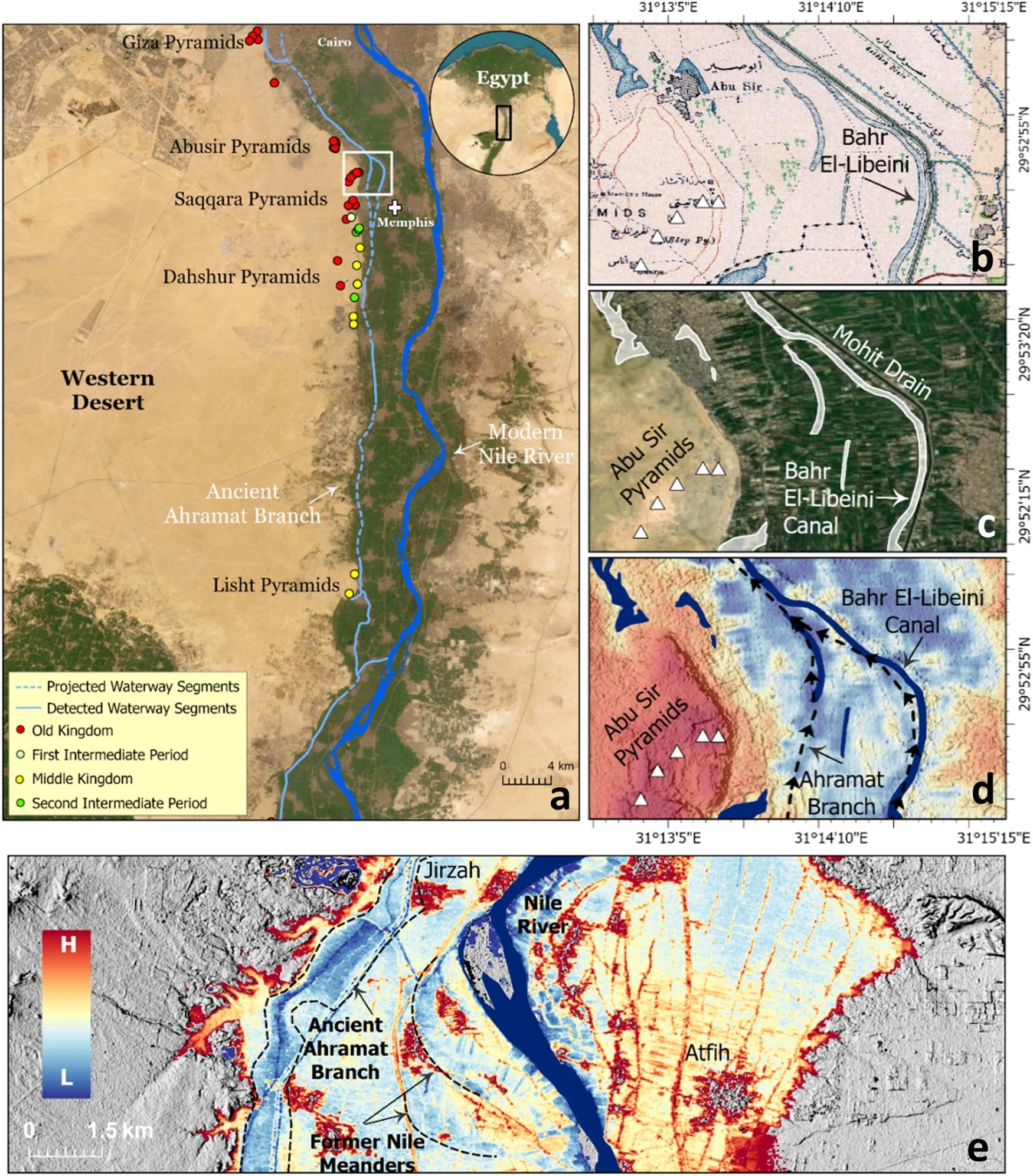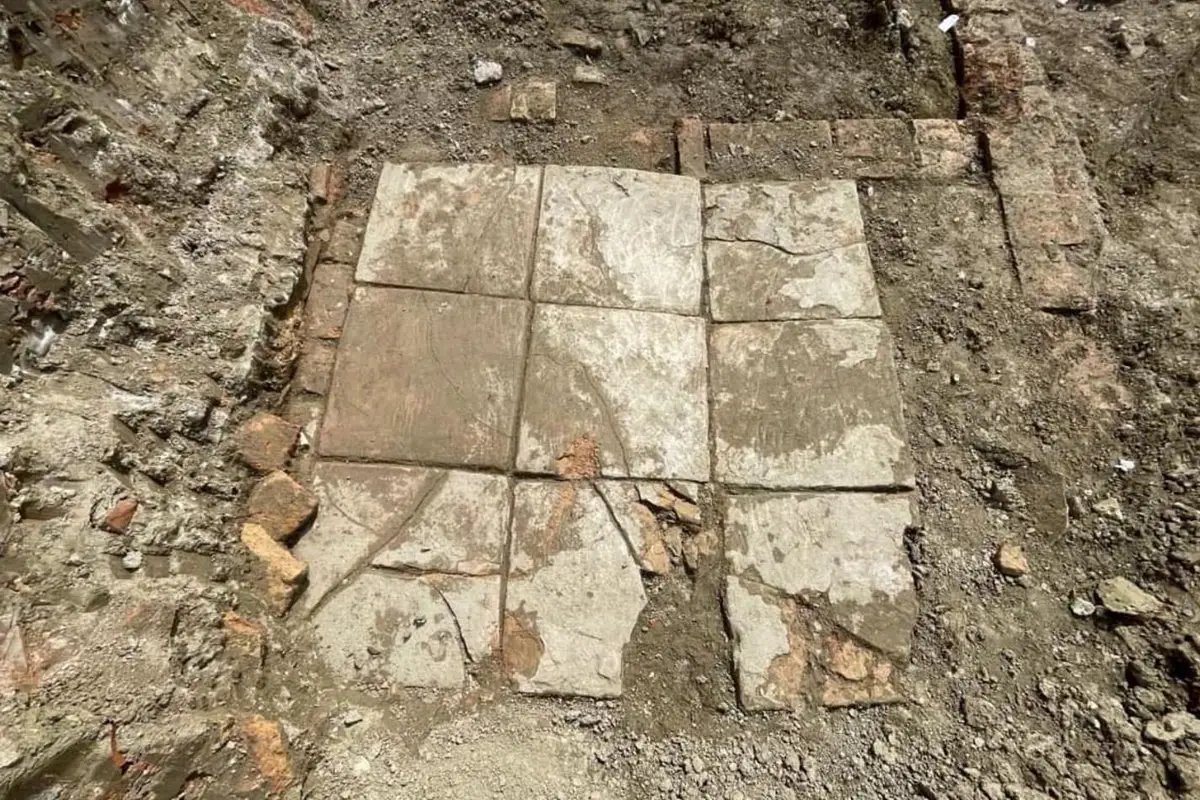Archaeology
20-metre-long Viking ship found in Norway
Archaeologists have discovered a 20-metre-long Viking ship during excavations of the Salhushaugen burial mound in Karmøy, Norway.
The mound was first investigated over a century ago by the archaeologist, Haakon Shetelig, however, excavations at the time showed no evidence to indicate that a ship was buried in situ.
“He was incredibly disappointed, and nothing more was done with this mound,” says Håkon Reiersen, an archaeologist at the Museum of Archaeology at the University of Stavanger.
Archaeologists returned to the mound in June 2022 to conduct a ground-penetrating radar survey (GPR), a geophysical method that uses radar pulses to image the subsurface and detect archaeological features.
The survey revealed a 20-metre-long ship, similar in size to the famous Oseberg ship, which Shetelig excavated along with Gabriel Gustafson in 1904. The Oseberg ship measures 21.5 metres and was discovered at the Oseberg farm near Tønsberg in Vestfold og Telemark county.
The survey also shows that the ship is located in the centre of the mound where a burial ship of a high-status Viking elite would normally have been buried, suggesting that the discovery is likely an intact burial ship and contains human remains.
This is supported by Shetelig’s earlier excavation where he found a large circular stone slab possibly used as an altar for sacrifices. A similar example was found in the Storhaug mound excavated in 1886, which contained a burial ship and numerous grave goods alongside the burial.
The Storhaug mound dates from AD 770 – which the team have used as a model to suggest preliminary dating of the new discovery to around the late AD 700’s.
Professor Jan Bill, curator of the Viking Ship Collection at the Museum of Cultural History, University of Oslo, told ScienceNorway: “It’s a magnificent find. Karmøy has always stood out as unusual with two ship burial mounds located in the exact same area, so this third ship just adds to the impression that there is something special going on here.”
Header Image Credit : Eva Gjerde – Museum of Archaeology, University of Stavanger
Archaeology
Groundbreaking study reveals new insights into chosen locations of pyramids’ sites

A groundbreaking study, published in the journal Communications Earth & Environment, has revealed why the largest concentration of pyramids in Egypt were built along a narrow desert strip.
Since the beginning of the Pharaonic era, the Nile River has played a fundamental role in the rapid growth and expansion of the Egyptian civilisation.
The Nile provided sustenance and functioned as the primary mode of transportation for goods and building materials, which explains why most of the main cities of the Egyptian civilisation were built in close proximity to the banks of the Nile and its peripheral branches.
Over the centuries, the primary channel of the Nile shifted laterally, causing these peripheral branches to silt up. As a result, population centres were cut off from the vital resources the river provided.
Image Credit : Eman Ghoneim et al
This is apparent with the pyramids along the Western Desert Plateau, where a majority of the pyramids are concentrated along a narrow desert strip several kilometres from the current primary channel of the Nile.
Using a combination of radar satellite imagery, geophysical data, and deep soil coring, the study has investigated the subsurface structure and sedimentology in the Nile Valley adjacent to the pyramid clusters.
This has revealed an extinct branch of the primary channel called the Ahramat Branch, which was connected to the pyramids of the Old and Middle Kingdoms via causeways and their Valley Temples.
According to the study authors: “The Ahramat Branch played a role in the monuments’ construction and was simultaneously active and used as a transportation waterway for workmen and building materials to the pyramids’ sites.”
The eastward migration and abandonment of the Ahramat Branch could be attributed to gradual movement of the river to the lower-lying adjacent floodplain or tilting of the Nile floodplain toward the northeast as a result of tectonic activity, as well as windblown sand incursion due to the branch’s proximity to the Western Desert Plateau.
Header Image Credit : Eman Ghoneim et al
Sources : Ghoneim, E., Ralph, T.J., Onstine, S. et al. The Egyptian pyramid chain was built along the now abandoned Ahramat Nile Branch. Commun Earth Environ 5, 233 (2024). https://doi.org/10.1038/s43247-024-01379-7
This content was originally published on www.heritagedaily.com – © 2023 – HeritageDaily
Archaeology
Archaeologists find Roman villa with ornate indoor plunge pool

Archaeologists from the National Institute of Cultural Heritage have uncovered a Roman villa with an indoor plunge pool during excavations at the port city of Durrës, Albania.
During antiquity, Durrës was founded by Ancient Greek colonists from Corinth and Corcyra.
The colony emerged into a major trading centre, which during the Roman period was annexed into the expanding territory of the Roman Republic following the conclusion of the Illyrian Wars.
By the 4th century, the city (named Dyrrachium), emerged as the capital of the Roman province of Epirus nova, covering the region of Ancient Epirus.
Image Credit : IKTK
Archaeologists excavating a former residential part of the ancient city have uncovered a high status Roman villa that dates from between the 1st and 4th century AD.
The villa interior contains an indoor pool, richly decorated with frescoes on the walls and mosaic flooring with tiles and inlays of marble, stone, glass and ceramics. Located adjacent to the pool are shallow square basins lined with waterproof mortar, believed to be the remains of an ancient water feature.
Within the northern area of the excavation site, archaeologists found a large brick floor from a thermae, a Roman bath, and further traces of walls from the wider complex.
In the western area, the team discovered fragments of relief stucco that was used to decorate the walls and ceilings of the villa. The reliefs depict anthropomorphic and floral motifs, further indicating the wealth of the villa inhabitants.
According to the archaeologists, the villa was destroyed by an earthquake in the 4th century, corresponding with ancient sources that describe a powerful earthquake causing buildings to collapse and the city defences to crumble.
Header Image Credit : IKTK
Sources : National Institute of Cultural Heritage
This content was originally published on www.heritagedaily.com – © 2023 – HeritageDaily
-

 Ghosts2 years ago
Ghosts2 years agoZozo: The Ouija Board Demon
-

 Space2 years ago
Space2 years agoScientists claim to have found the answer what existed before the Universe
-

 Ghosts2 years ago
Ghosts2 years agoOld Coot of Mount Greylock
-
Archaeology1 year ago
New discoveries at Ekʼ Balam during conservation works
-

 General3 years ago
General3 years agoUC San Francisco engaging in horrifying experiments, organ harvesting of live babies in the name of “science”
